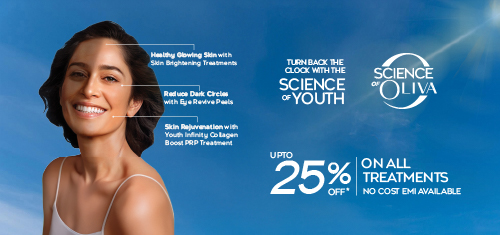

Hypertrichosis
Types, Prevention And Treatment OptionsHypertrichosis is a dermatological condition causing excessive hair growth on the body. This can be either localised or generalised and affects both men and women.
What Is Hypertrichosis?
Hypertrichosis refers to a dermatological condition that results in excessive hair growth anywhere on the body.
Dermatologists may classify the condition in the following categories:
- Congenital (from birth) or acquired
- Localised or Generalised and
- Depending on the type of hair, i.e. lanugo, vellus or terminal hair
The most visible symptom of hypertrichosis is the presence of hair in higher amounts than average. This hair can be either lanugo (soft, unpigmented hair that is generally visible in newborns during the first few days of life) or vellus (thin and fine hair) or terminal hair the thick hair that appears on legs).
The excessive growth of hair can occur all over the body or in small, isolated patches. This rare condition can affect both men and women equally. It can manifest at birth or develop at a later stage in life.
Types Of Hypertrichosis
Congenital Hypertrichosis
Present at birth, may be part of syndromes or isolated with family history.
Acquired Hypertrichosis
Develops later in life due to chronic conditions or certain medications.
Localised Hypertrichosis
As the condition may be a part of an underlying abnormality of the vertebrae and spinal cord.
Causes of Hypertrichosis
Dark circles most commonly appear due to blood vessels becoming visible due to thinning skin under the eyes because of ageing or other lifestyle factors. It can also occur due to melanin deposits, changes in skin texture, or volume loss, leading to tear trough formation.
-
Medication usage (steroids, minoxidil and intrauterine exposure to medications like hydantoin and alcohol)
-
Skin irritation
-
Friction
-
Syndromes like Ambras syndrome, Cantu syndrome and Cornelia de Lange syndrome
-
Disorders such as congenital hypertrichosis lanuginosa and universal hypertrichosis
-
Birthmarks like congenital melanocytic nevus or Becker’s nevus.
-
Chronic illnesses like cancer, thyroid disorders, anorexia nervosa
Diagnosis
Examination
Dermatologists diagnose hypertrichosis with a detailed physical examination of the excess hair growth while taking into consideration other factors such as the individual’s age, sex, ethnicity and his or her androgen sensitivity.
Sensitivity Check
They consider factors such as the individual’s age, sex, ethnicity and his or her androgen sensitivity.
Review Medical History
They may record your medical and family history, lifestyle habits and recent medicinal intake for an accurate conclusion.
Are you at Risk?
-
If you suffer from excessive hair growth that affects the entire body.
-
If you are on medication that may trigger hypertrichosis.
-
If you were using steroids, oral or topical without supervision.
-
If you have a habit of rubbing your skin.
-
If you have health issues like Porphyria Cutanea Tarda.
Treatments Available
Laser hair removal (LHR) is an advanced aesthetic treatment to manage hypertrichosis that uses a high-energy beam of light in a focussed manner to destroy stem cells found in hair follicles systematically. This reduces hair growth and density. The innovative use of laser technology for hair removal offers a high degree of precision, causing no damage to the surrounding skin.
Prognosis
- Congenital Hypertrichosis: Managed with regular hair removal.
- Acquired Hypertrichosis: Treatment focuses on managing the underlying cause and hair removal.


